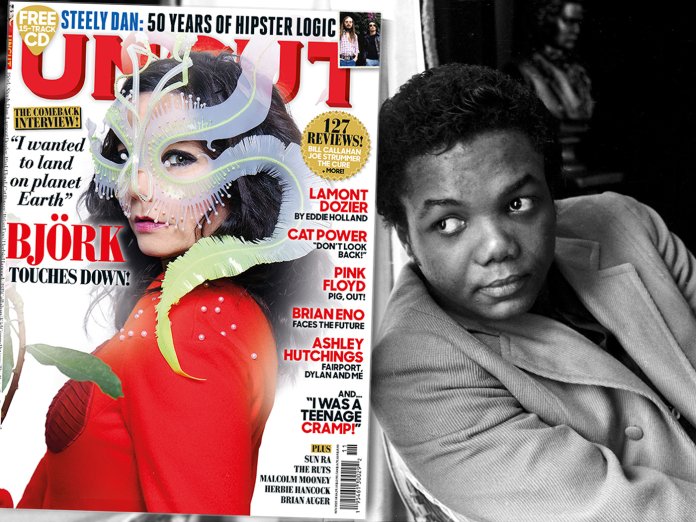When LAMONT DOZIER died on August 8, 2022, we lost one of the chief architects of the Motown sound: a master craftsman who helped define popular music during the 1960s. Here EDDIE HOLLAND pays a moving, in-depth tribute to his friend and former collaborator – taking us from the factory floor at Hitsville USA during Motown’s imperial phase to revelations about more recent plans to revive the Holland-Dozier-Holland partnership. “Lamont, Brian and I were together so long, the relationship we had was beautiful,” he tells Nick Hasted, in the latest issue of Uncut magazine – in UK shops from Thursday, Sept 15 and available to buy from our online store. “I still don’t really want to think about him being gone.”
PLUS: The Four Tops, The Chairmen Of The Board, Mick Hucknall and more salute Dozier’s songwriting genius.
The last time I saw Lamont Dozier was in 2020. He was living in Las Vegas and Barbara, his wife, asked if I would go to a meeting. I was very surprised. I’d been wanting him to do something with Holland-Dozier-Holland again and that’s what he wanted to talk about. Barbara asked if I would consider letting Lamont get involved with a song Brian and I had written. Could we work out an arrangement as Holland-Dozier-Holland again? I said, “Sure.”
You see, when Hitsville was really humming, it was magic. We were on another kind of high. It was almost as if something took over – something stronger than us. For four, five years, we were on a flow. But back there at Motown, I don’t think Holland-Dozier-Holland ever reached their full potential. In fact, we’d only just got started. So I wanted to work on some songs again, do something together. But, somehow, we never really got around to it.
I heard about Lamont’s passing from his brother Reggie. I’m still not over it. Intellectually, I understand he’s not here. But emotionally, I don’t want to accept it. I don’t want him not being here. Lamont, Brian and I were together so long, the relationship we had was beautiful.
Lamont had already started working together with Brian at Motown in 1962. But it was my idea to put them together, with me writing lyrics. Don’t get me wrong, Lamont was a fine writer. But they were so musically fluent, writing lyrics was holding them up. So I said to my brother, “How about I do the lyrics? This way, we could cover a lot of ground real fast.” We worked together like a charm. Matter of fact, we would come up with so many records so often and so fast, I’d say, “My God, is it that easy?” But it wasn’t that it was easy – it’s just that when we were producing records, we were instinctive, uninhibited. We had people coming from New York saying, ‘Wow, do you realise you’ve had this many Top 10 and No 1 records?’ Well, not really. We never talked about how successful we were among ourselves. As competitive as all the writers were at Motown, we always helped each other. The fact is, we were very, very young and we had a certain naïveté. We were just in the mood and the moment. We were doing what we felt, man.
This is the way it worked between Lamont and Brian. Brian was very, very good on melodies. Lamont was too, but sometimes he tended to ask Brian to correct some chord he was looking for. Marvin Gaye’s “Can I Get A Witness”, or “Jimmy Mack” by Martha & The Vandellas – those are straight R&B. That is Lamont, not Brian. The first real big song we did on the Vandellas, “Heat Wave” – that was basically Lamont’s melody and production. Lamont was very good at shuffles.
I asked my brother once, “Why does Lamont do those kinds of rhythms?” Nobody can sing that stuff but him and me – I’d have to sing them to translate them to the artists. Brian said, “Ed, let me tell you something. Lamont was a drummer. He still has the rhythms he learned from that.” I said, “Wow! That’s why it’s tricky like that.” It’s the way he syncopates, it’s almost an off-timing thing, that doubles up in a certain beat – bababa-bababa, ba-ba ba-ba.
PICK UP THE NEW ISSUE OF UNCUT TO READ THE FULL STORY



